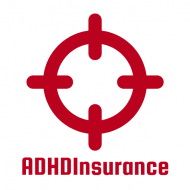Attention-Deficit/Hyperactivity Disorder (ADHD) and Autism Spectrum Disorder (ASD) are two neurodevelopmental conditions that often become points of confusion for parents, educators, and even healthcare professionals. Although they share some overlapping characteristics, they are distinct diagnoses with unique features. Understanding the nuanced relationship between ADHD and autism is crucial for effective diagnosis and intervention. This article will explore how ADHD and autism relate to each other and delineate their key differences.
Exploring the Relationship Between ADHD and Autism Spectrum Disorders
ADHD and autism are both classified as neurodevelopmental disorders, meaning they affect brain development and functioning, which can influence behavior, communication, and social skills. Research indicates that these two conditions can co-occur, with studies showing that individuals with autism are more likely to exhibit symptoms of ADHD than those in the general population. This overlap raises important questions about the nature of both conditions and the potential shared underlying neurological mechanisms that may contribute to their symptoms.
Despite the shared characteristics, it is essential to recognize that ADHD and autism stem from different etiological factors and manifest in unique ways. ADHD is primarily characterized by persistent patterns of inattention, hyperactivity, and impulsivity, while autism encompasses a broader spectrum of behaviors, including difficulties in social interaction, communication challenges, and restricted or repetitive behaviors. This fundamental difference emphasizes that ADHD is not merely a form of autism but instead represents a separate but related neurodevelopmental disorder.
Distinguishing Features: ADHD vs. Autism Explained
One of the key distinguishing features of ADHD is the individual’s capacity for attention and impulse control. Children and adults with ADHD often struggle to maintain focus on tasks, leading to difficulties in academic and occupational settings. Hyperactivity, which can manifest as excessive fidgeting or restlessness, is another hallmark of the disorder. These symptoms can lead to challenges in social situations, but they do not inherently involve the social communication deficits commonly seen in autism.
In contrast, autism is prominently characterized by specific impairments in social interactions and communication skills. Individuals with ASD may exhibit difficulties in understanding social cues, establishing eye contact, and engaging in reciprocal conversations. Additionally, they may display repetitive behaviors or have very specific interests that can dominate their focus. While both ADHD and autism can lead to social challenges, the underlying reasons for these difficulties differ significantly, highlighting the importance of accurate diagnosis and tailored interventions for each condition.
In conclusion, while ADHD and autism are both neurodevelopmental disorders that may share overlapping symptoms and co-occur in some individuals, they are fundamentally different in their core characteristics and impacts. Recognizing these distinctions is critical for effective assessment, intervention, and support for those affected by either condition. Understanding the unique nuances of ADHD and autism not only aids in diagnosis but also fosters better educational strategies and therapeutic approaches tailored to each individual’s needs.
Dr. Jonathon Preston is a respected mental health specialist dedicated to helping individuals overcome challenges. With advanced training in psychology and decades of experience in the mental health field.
